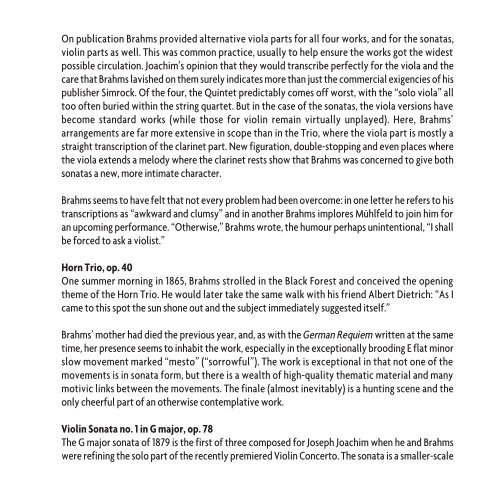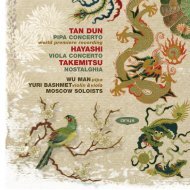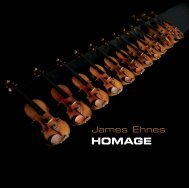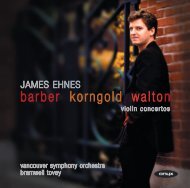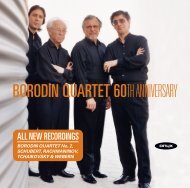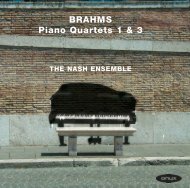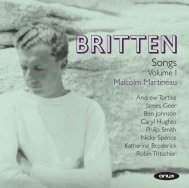BRAHMS VIOLA - Onyx Classics
BRAHMS VIOLA - Onyx Classics
BRAHMS VIOLA - Onyx Classics
- Keine Tags gefunden...
Sie wollen auch ein ePaper? Erhöhen Sie die Reichweite Ihrer Titel.
YUMPU macht aus Druck-PDFs automatisch weboptimierte ePaper, die Google liebt.
On publication Brahms provided alternative viola parts for all four works, and for the sonatas,violin parts as well. This was common practice, usually to help ensure the works got the widestpossible circulation. Joachim’s opinion that they would transcribe perfectly for the viola and thecare that Brahms lavished on them surely indicates more than just the commercial exigencies of hispublisher Simrock. Of the four, the Quintet predictably comes off worst, with the “solo viola” alltoo often buried within the string quartet. But in the case of the sonatas, the viola versions havebecome standard works (while those for violin remain virtually unplayed). Here, Brahms’arrangements are far more extensive in scope than in the Trio, where the viola part is mostly astraight transcription of the clarinet part. New figuration, double-stopping and even places wherethe viola extends a melody where the clarinet rests show that Brahms was concerned to give bothsonatas a new, more intimate character.Brahms seems to have felt that not every problem had been overcome: in one letter he refers to histranscriptions as “awkward and clumsy” and in another Brahms implores Mühlfeld to join him foran upcoming performance. “Otherwise,” Brahms wrote, the humour perhaps unintentional, “I shallbe forced to ask a violist.”Horn Trio, op. 40One summer morning in 1865, Brahms strolled in the Black Forest and conceived the openingtheme of the Horn Trio. He would later take the same walk with his friend Albert Dietrich: “As Icame to this spot the sun shone out and the subject immediately suggested itself.”Brahms’ mother had died the previous year, and, as with the German Requiem written at the sametime, her presence seems to inhabit the work, especially in the exceptionally brooding E flat minorslow movement marked “mesto” (“sorrowful”). The work is exceptional in that not one of themovements is in sonata form, but there is a wealth of high-quality thematic material and manymotivic links between the movements. The finale (almost inevitably) is a hunting scene and theonly cheerful part of an otherwise contemplative work.Violin Sonata no. 1 in G major, op. 78The G major sonata of 1879 is the first of three composed for Joseph Joachim when he and Brahmswere refining the solo part of the recently premiered Violin Concerto. The sonata is a smaller-scale


